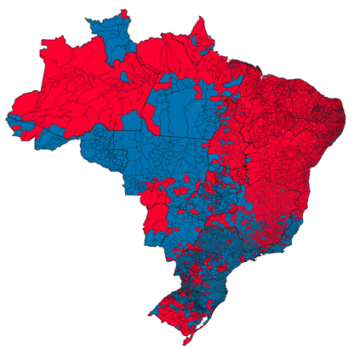 Pedro Mendes Loureiro in Phenomenal World:
Pedro Mendes Loureiro in Phenomenal World:
Earlier this month, Brazilians went to the polls in an election billed as the most momentous since democratization in 1985. Far-right president Jair Bolsonaro faced off against former two-term president Luiz Inácio “Lula” da Silva. Though Lula did win the first-round election by more than 5 percentage points, or 6 million votes, it was not enough to clear the 50 percent threshold needed for first-round victory. The opponents will face a polarizing run-off on October 30.
In Brazil, the national and state-level executives are elected by direct proportional representation for four-year terms. This is also the case with the Senate, comprising eighty-one seats, each serving eight-year terms. The lower-house national legislature, the Chamber of Deputies (comprising 513 seats, each serving four-year terms) is elected via open list proportional representation through state-based lists, with a 2 percent threshold and a rather complicated alliance system between parties. As a result, there has systematically been a disjuncture between the executive and the legislative in the country, and presidents need to cobble together shifting alliances to try and form the temporary majorities they need to legislate. At best this has led to weak governments, and at its worst it has been the breeding ground for semi-legal practices and various corruption scandals over the years.
The results from Brazil’s first round show a sharp turn to the right in the legislature—for which there are no run-offs—as well as in gubernatorial races.
More here.
